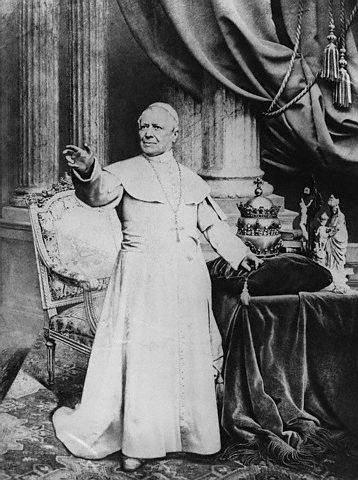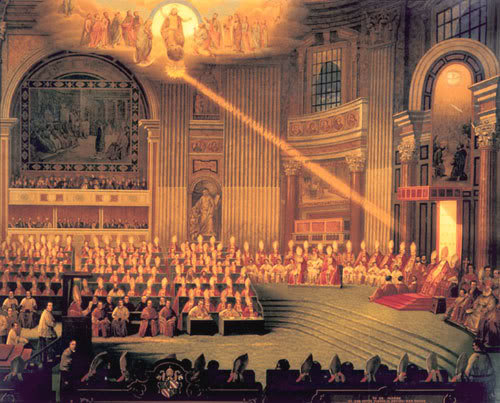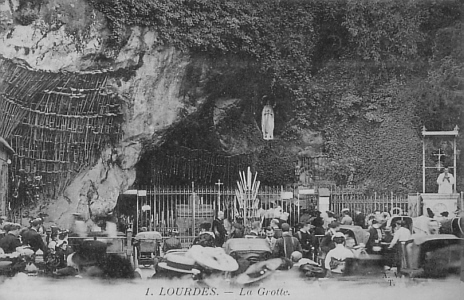Charles Sowerwine, “The Social and Cultural Bases of Republicanism” in France since 1870: Culture, Politics, and Society
Catholic Conservatism
A majority of the population still professed allegiance to the Roman Catholic Church, which remained the established religion until 1904. For many, the Church represented spirituality in a materialistic world. But the Church's support for the monarchy and its political attitudes between 1848 and the 1870s set it against republicans. More fundamentally, the Church assumed that spiritual world was superior while republicans assumed that human reason fully know the world because it was material and only material; for them thee was no supernatural world. . . .
Republicans saw the Church as the enemy and made increasing efforts to limit its influence. Ferry developed state education in part to take women and children away from the Church's control. He put through the first laws limiting religious orders, which resulted in the dissolution and expulsion of the Jesuits in 1880. For us who live in a secular age, the virulence of this anticlericalism is surprising. We can only understand it if we recall that republicans found the Church constantly lined up against them. Moreover, some Church-activities created resentment among workers. Convent work shops undercut regular workers. Nuns often acted as supervisors of women in factories. At the Louvre department store in 1869, 100 nuns replaced striking saleswomen. And in prison and in exile in New Caledonia, Communard women would be guarded by nuns. Anticlericalism would remain for many the litmus test for sincerity in republican conviction.
The long reign of Pius IX as Pope, from 1848 to 1878, was marked by a hardening of the Church's positions. In the face of the progress of . science and the belief in Reason, Pius sought to reaffirm the old cosmology in which the essential things were known not through the use of Reason in the material world, but through the application of Faith in the divine. Pius proclaimed the doctrine of Immaculate Conception in 1854 and the infallibility of the Pope when speaking ex cathedra -- from the chair, that is officially -- in 1870. The Syllabus of Common Errors of 1864 listed and condemned 80 modern errors, including the error that 'the Roman Pontiff can and should reconcile himself to and agree with progress, liberalism, and modern civilisation'.
This and other papal pronouncements cut the ground out from under moderate Catholics in France. . . .

Pope Puis IX

Painting of the First Vatican Council (1868-1870) at which Papal Infallibility was Made Official Catholic Doctrine
